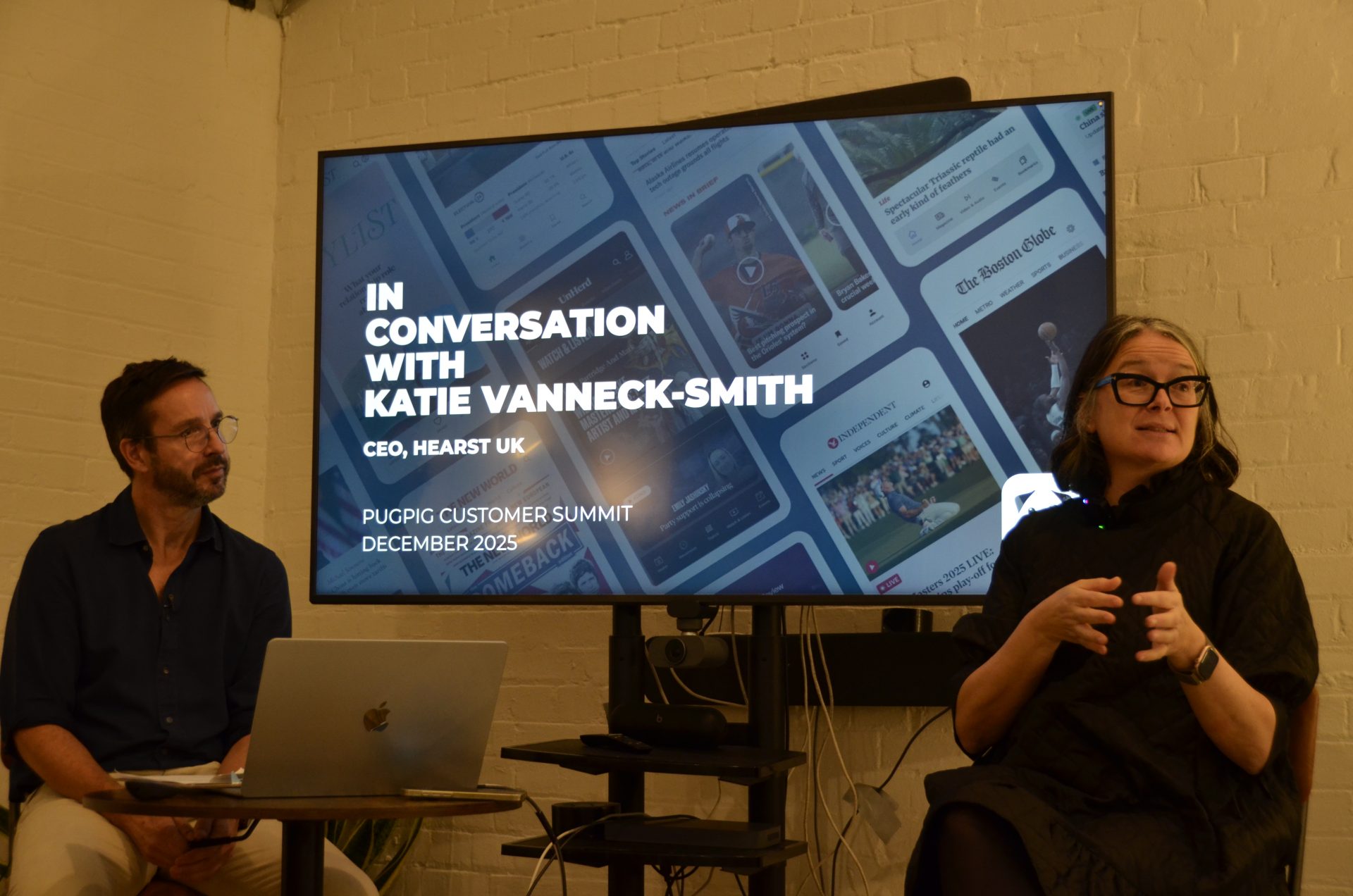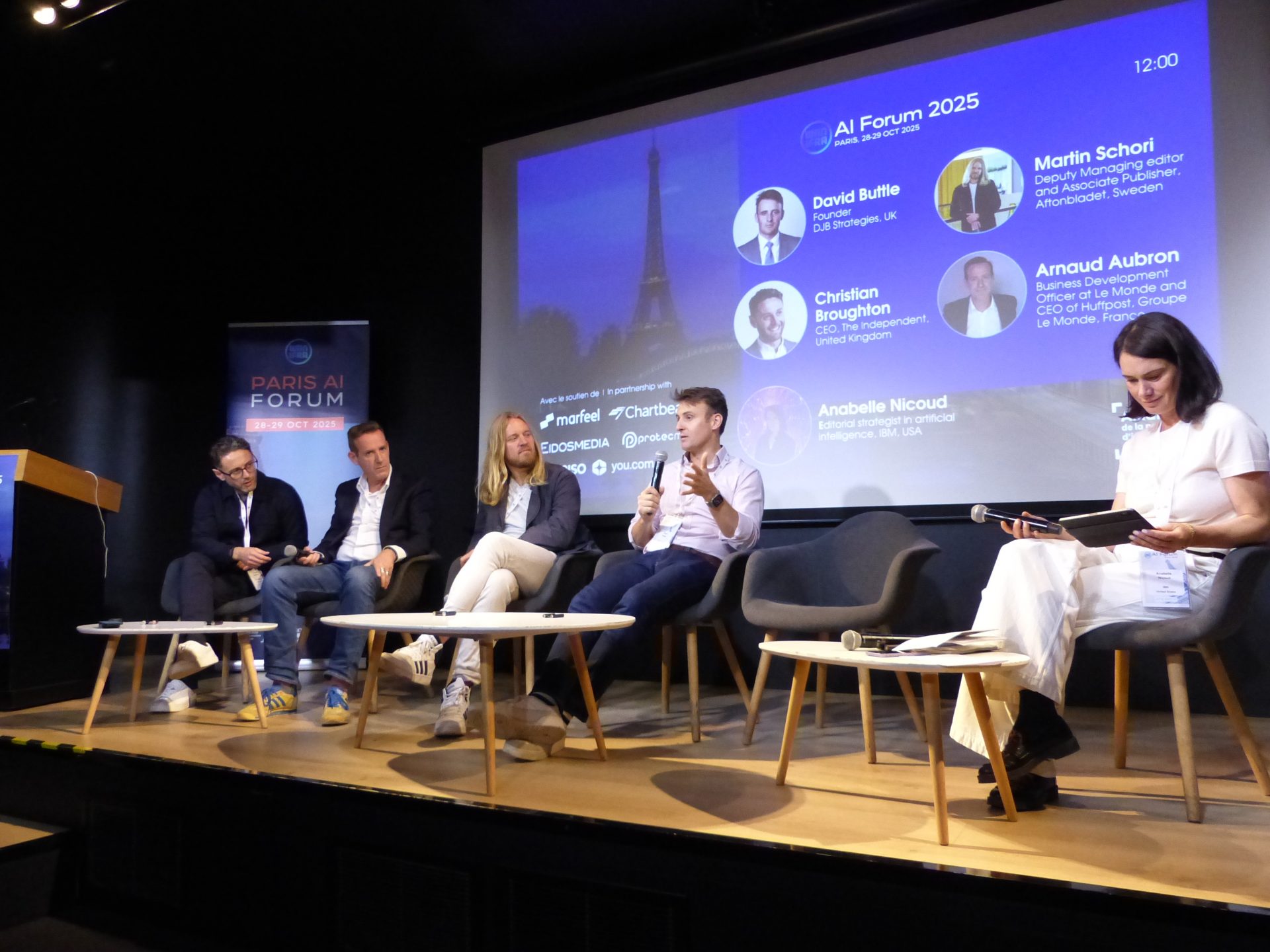
Newsletter
Newsletter
We review the ways that apps can grow and diversify the revenue of news publishers.
16th August 2024

After years of pouring energy into growing their audiences on social media platforms, news publishers have shifted their focus to their own channels after it became clear that social media wasn’t driving revenue or relationships with those rented audiences. More than three-quarters of news organisations (77%) told the Reuter’s Institute’s Nic Newman that their response to the collapse in traffic from Facebook and Elon Musk’s EX-Twitter would be to invest in their websites, apps, newsletters and podcasts.
We’ve frequently outlined the challenges publishers have faced with the end of the Platform Era. The drop in referral traffic has hit news publishers’ bottom line. Moreover, as platforms send less traffic to publishers, Google and Facebook have continued to capture a greater share of digital advertising. In the UK, display advertising declined for much of 2023 to the point that subscription revenue had closed the gap as a share of overall revenue. Research in the US showed that local newspapers trailed far behind Google and social media companies in the competition for local advertising dollars.
In response, news publishers are focused on products that build direct relationships with audiences and offer opportunities to increase reader revenue. Instead of focusing on growing off-platform engagement, many publishers have fixed their goals around a North Star of subscriber growth.
Apps are part of this product portfolio in what we have called the Push Era, an era in which audiences sign up for newsletters, subscribe to podcasts or download apps that allow content to be pushed directly to their inboxes and lockscreens. We have spoken about how these products lead to engagement, but in this edition of the Media Bulletin, we’ll show how apps, in particular, support news publishers’ bottom line.
With the rise of digital media, news publishers initially tried to compete with internet insurgents by going toe-to-toe on scale. It has led to consolidation and closures as publishers first sought to buy scale and then have been forced to cut costs as that strategy proved unsustainable.
Most publishers – whether large national brands like The Times in the UK, The New York Times in the US, or a new generation of small local news publishers – have shifted from volume to value. They have pivoted from trying to monetise massive, unknown audiences to earning revenue from smaller, known audiences.
Publishers use free newsletters to begin relationships and build habits with audiences, while free and paid newsletters drive website traffic. Paid newsletters also create habits with audiences that support retention. The Telegraph has found that a subscriber who has clicked a link in a newsletter is 50% more likely to remain a subscriber a year later.
National news publishers have leaned into podcasts, with The New York Times even launching a separate audio app for subscribers as part of its premium bundle. The king of newspaper digital subscriptions says that a million people downloaded the app between its launch in May of 2023 and the end of the year.
Apps fill out this suite of high-engagement products. Our research for the 2024 State of Mobile Publishing Report found that while apps serve a fraction of a publisher’s overall digital audience, they engage a much larger proportion of a publisher’s most important audience, their subscribers. At French news publisher Le Monde, 60% of their digital subscribers use their app at least once a day, Jean-Michel De Marchi, Editor-in-Chief at Mind Media, wrote for The Audiencers.
News publishers have long known the value of apps in retaining subscribers, and in our research, this is still seen as the primary role they play due to the high level of engagement.
However, one of the concerns publishers told us in our research was they were facing challenges with audience and subscriber growth as well as “subscription fatigue”. It was why retention topped the list of their priorities, a problem apps solve.
Publishers are looking for their next source of audience and revenue growth, and as subscriber growth slows, they will need to diversify their revenue streams and earn more revenue from their users. Recent research from FT Strategies found that four different streams delivered the highest profit margin.
Websites and apps both have their roles in growing revenue. Publishers’ websites are important, especially as registration plus metered paywalls have helped increase the pool of known users. Zero-party data offers opportunities to market other services and products to audiences including subscription products, events and partner marketing as The Baltimore Banner does.
Apps offer opportunities for publishers to grow their subscriber and advertising revenue. Armed with zero- and first-party data, publishers can deliver personalised app experiences to encourage registered users to convert to paid subscribers. This is because more relevant push notifications and content draw them into the app more frequently and regularly.
Comments, live blogging and other digital community functions are helping drive deeper engagement with apps. Apps have two to four times the conversion rate of the mobile web, so with this boost, apps are becoming acquisition tools.
Apps can also be a source of advertising revenue. In-app advertising revenue is dramatically higher than in-app purchases in the US, according to eMarketer. As we wrote last week, user data supports the delivery of more relevant advertising, allowing publishers to charge higher advertising rates.
Beyond the traditional pillars of subscription and advertising revenue, a new generation of apps offers a range of opportunities for news publishers to increase ARPU. For a few years after its acquisition, The New York Times with its Wirecutter reviews service was the fastest-growing revenue line item. The New York Times earned a share of revenue as users clicked through to purchase the reviewed items.
News publishers like The Independent are weaving affiliate marketing into their apps via reviews and considering opportunities to leverage the wealth of data they have to sell directly to consumers.
Publishers are also looking to create premium offerings. A quarter of publishers bundle products or additional services together and charge a premium for them, according to INMA. The New York Times has grown the number of subscribers buying its All-Access Bundle, which has increased its revenue per user.
Non-profit news organisations have leaned into membership models for additional revenue, and apps could have special members-only content or features.
News publishers should also take a page from the playbook of consumer magazines, which are launching premium membership tiers. Apps could be a gateway to access members-only content and events. Hearst UK’s Men’s and Women’s Health Apps offer membership levels that offer access to personal training advice in their apps. Scandinavian publisher Schibsted has found success with a health club app membership.
High-engagement products including apps, podcasts and newsletters and the data that flows from them offer news publishers exciting new opportunities to bolster their businesses and support their important journalism. We are seeing a new phase of experimentation with apps opening up even more opportunities for news publishers.
Here are some of the most important headlines about the business of news and publishing as well as strategies and tactics in product management, analytics and audience engagement.

Newsletter

Newsletter

Newsletter

Newsletter

Newsletter